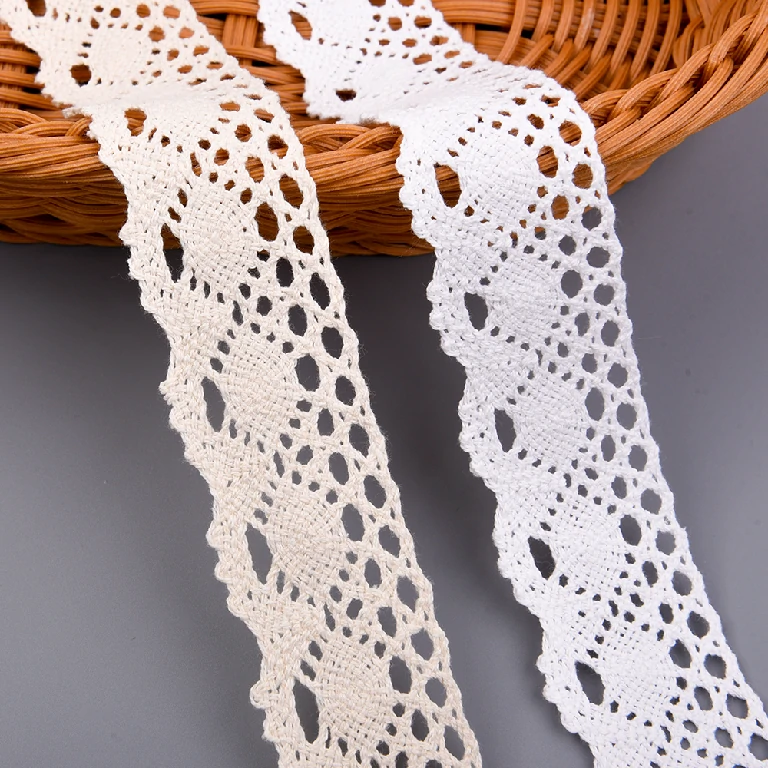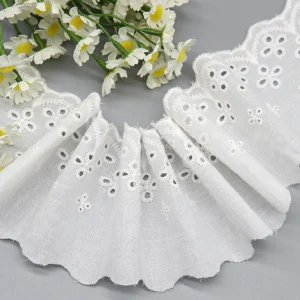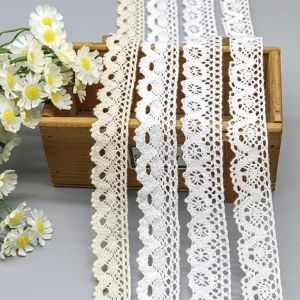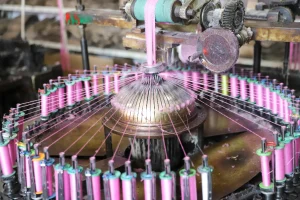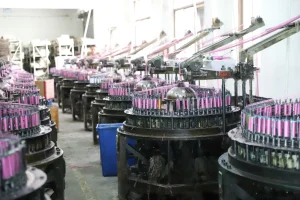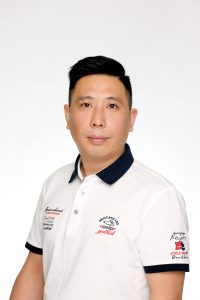Short Description:
A comprehensive B2B comparison and joint promotion strategy for cotton embroidered lace and cotton thread lace—analyzing production cost, raw material risks, factory processing, market positioning, and synergy for wholesale growth.
Table of Contents
What are the main differences in production cost components between cotton embroidered lace and cotton thread lace?
Cotton Embroidered Lace:
Cost factors include base fabric, embroidery threads, labor-intensive stitching or machine embroidery, design complexity, and finishing processes.
Generally involves higher labor or machine usage for embroidery, which can raise overall per-meter costs, especially for intricate patterns.
Cotton Thread Lace:
Mainly composed of cotton thread, often produced with lace machines or bobbinet methods, requiring less backing fabric.
Usually benefits from greater automation and less manual labor, making per-unit costs lower in mass production.
What is the difference between embroidery thread and cotton thread?
Why is cotton good for embroidery?
Cotton is a classic choice for embroidery because of its natural feel, soft texture, and ability to hold stitches well. Cotton is the preferred fabric for embroidery when you want a textured, traditional, and breathable finish. It absorbs embroidery thread well and is easy to work with, especially for hand embroidery.
How do the two cotton lace types compare in production stability and quality consistency?
Cotton thread lace, being produced by specialized lace machines, offers superior consistency in width, motif, and texture across large batches.
Cotton embroidered lace may show subtle variations due to the embroidery process (manual or machine); however, modern digitized embroidery can achieve high consistency if quality controls are strict.
For B2B clients prioritizing repeatable bulk quality, cotton thread lace has a slight edge, but embroidered lace is improving with advanced tech.
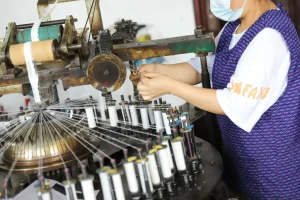
What is the difference between handmade and machine made lace?
Handmade needle lace displays distinct stitches made by human hands, observable under magnification. In comparison, machine lace, produced by numerous needles working simultaneously, results in less clarity of individual stitches.
Manual operations play a vital role in high-quality textile production.
Regarding raw material supply, what are the availability and supply chain risks for the cotton materials used in embroidered lace versus thread lace?
Both laces depend on the supply of high-quality cotton threads or yarns, sourced globally.
Embroidered lace may face added procurement complexity if the base fabric differs or if decorative threads with special finishes/dyes are required.
Cotton thread lace has a more straightforward supply chain tied directly to yarn suppliers, minimizing risk, while embroidered lace may require managing more varied material sources for consistent results.
Supply Chain Risks for Cotton in Embroidered and Thread Lace
How well do factory production lines adapt to manufacturing these two types of lace? Are different equipment or processes required?
Cotton thread lace is often manufactured on specialized lace-making equipment, ideal for continuous, high-speed, and high-volume production lines.
Cotton embroidered lace needs embroidery machines or manual embroidery setups—potentially slower but more flexible for design customization.
Some factories integrate both technologies, but production line changes and equipment investments may be necessary for full adaptability.
What is lace most commonly used for?
Lace is mainly used as a decorative addition to other textile products. For instance, bridal dresses often feature multiple lace segments, and it’s also relatively common to add lace to other formal and informal women’s garments.
Considering market applications, what are the style and craftsmanship advantages of cotton embroidered lace and cotton thread lace in underwear and accessory sectors?
Cotton Embroidered Lace:
Offers richness and depth of pattern, allows for design personalization, and provides a more “crafted” or artisanal effect.
Particularly valued in premium lingerie, decorative accessories, and limited editions.
Cotton Thread Lace:
Features uniform motifs, classic appearance, and higher air permeability.
Preferred for large-scale, mainstream underwear and accessory production where cost-efficiency and uniformity are priorities.
From a B2B perspective, how can the two lace types be positioned and promoted with differentiated strategies to achieve synergistic sales and market growth?
Synergistic Promotion:
Position cotton thread lace as the cost-effective standard solution for high-volume base products (basic lingerie, everyday accessories).
Highlight cotton embroidered lace as an upgrade or up-sell for premium, seasonal, or custom orders that require distinct design appeal.
Bundle both types in marketing to give buyers flexibility and encourage mix-and-match product development.
Use storytelling to differentiate handmade or embroidered details vs. engineered threadwork, targeting both functional and emotional buying motives.
